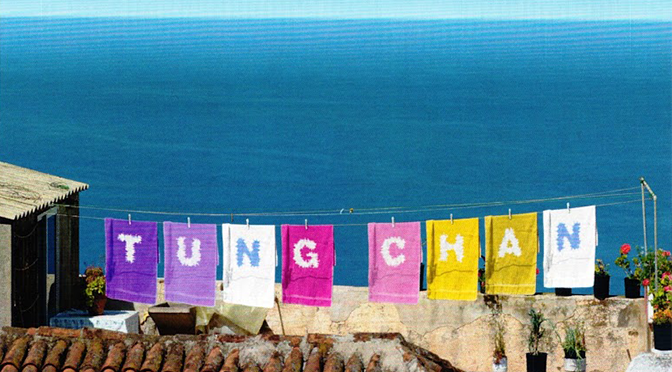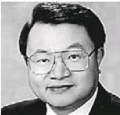Canada’s looming labour shortage crisis requires a new way of thinking More bureaucracy and credentialing organizations must be facilitators and enablers, not just gatekeepers
By Tung Chan, September 2007
British Columbia is facing an unprecedented challenge now and in the future when it comes to the supply of our labour force. With strong economic growth and an unemployment rate at an historic low, many businesses and organizations are unable to find the skilled labour they require.
While the challenge may seem hard now, the challenge in the future is even more difficult. By 2015, there will be a shortfall of 350,000 workers in the province. According to the B.C. government’s statistics branch, in 2015, there will be more than one million job openings in B.C. while only 650,000 young people will have moved through the K-12 system. This shortage will impact every sectors of the economy, sectors such as health, education, construction, forestry, hospitality and tourism.
If we do not find a solution to the challenge, it is not hard to imagine a scenario where surgeries frequently cancelled due to a shortage of nurses; people unable to find a family doctor; projects cancelled because there are not enough construction workers; or restaurants closed because there are not enough waiters and waitresses. In fact, in some parts of Canada, such a scenario is already reality.
Although the skills shortage is now well understood by our politicians – both federal and provincial politicians have shown leadership on the issue – the sad state of affairs is that many government officials and professional credentialing organizations appear to continue to be contented to play their traditional gatekeeper role and do not yet fully understand that we are competing with other countries for talent. Japan, for example, is reportedly planning to import up to 650,000 foreign workers annually and Australia is already running very effective media campaigns to attract workers from Hong Kong and China.
Unless a change of mindset occurs soon, skilled foreign workers will simply go elsewhere.
I recently met a doctor who was trained in one of the best medical schools in China. Because he is unable to practice, he is now working as a Sushi chef in a restaurant in Delta after immigrating here. As he has to provide for his family, he lacks the financial resources to take the qualification courses that he is required to go through. He is also discouraged by the three to four years that it will take for him to finish those courses as well as the uncertainty at the end of the process due to an inadequate availability of training positions.
We have also seen English proficiency requirements supersede equivalency programs for foreign trained nurses in B.C. Prior to January 1st of this year, English language preparation was integrated into the Certificate in Graduate Nurse with English as an Additional Language Program offered by Kwantlen University College. However, because of a policy change by the College of Registered Nurses of BC, applicants for this program must now demonstrate English language fluency at the time of submitting their application for registration. This policy change essentially imposes a barrier that unnecessarily delay the otherwise well qualified care givers from providing their services to alleviate a labour shortage that is galloping towards a critical level with the aging of our population. As an example, the Fraser Health Region alone is predicting a shortage of well over a thousand nurses by the year 2012.
In an attempt to offer a practical solution to the skilled labour shortage problem, S.U.C.C.E.S.S. and Spectra Energy, with financial support from the Ministry of Energy, Mines and Petroleum Resources, collaborated to launch the Immigrant Engineering Orientation Program (IEOP) in March of this year. IEOP, a program developed with the help of an Advisory committee that was made up of representatives from government, industry as well as the Association of Professional Engineers and Geoscientists of BC, is a first of its kind in BC. The program supports professional immigrant engineers in overcoming foreign credential recognition barriers and provides them with the opportunity to directly continue with their professional careers here in Canada.
The program includes 10 weeks of workplace culture and language preparation training developed and delivered by S.U.C.C.E.S.S. This is followed by 6 weeks of Canadian engineering work experience at Spectra Energy facilities in Northeastern B.C. Employment opportunities in the energy sector will follow the field practicum. While only 12 positions were available, close to 170 people applied.
Many groups, such as the Business Council of British Columbia, have suggested that an increased reliance on temporary foreign workers is an important means to help mitigate future labour shortages. According to the Business Council, Canada’s immigration rules should be overhauled to make it easier for temporary foreign workers with Canadian job experience and skills to become landed immigrants once they have spent time in the country.
But even getting temporary foreign workers into this country is not an easy task. The problem can be best illustrated by a recent situation where well qualified construction workers were denied temporary working visas by the federal bureaucracy in Shanghai. A B.C. company went there to recruit after failing to find suitable local workers. After interviewing 200 applicants, the company made job offers to 50 workers who were considered to have extraordinary qualifications. To the company’s great dismay and consternation, every one of the worker’s application for temporary work visa was declined by our bureaucrats based on groundless and outdated concerns that the individuals would want to stay in Canada permanently.
To meet the current and future growing skills shortage challenges, more of our federal and provincial bureaucracies as well as credentialing bodies in Canada need to change their mindsets when it comes to the way they apply immigration, labour and credential recognition policies. More of them need to think of themselves not just as gatekeepers. They need to think of themselves also as facilitators and enablers that have a duty to lend a hand to new comers and temporary foreign workers to make it possible for these new and potentially new Canadians to contribute to our communities to the best of their qualifications and abilities.



